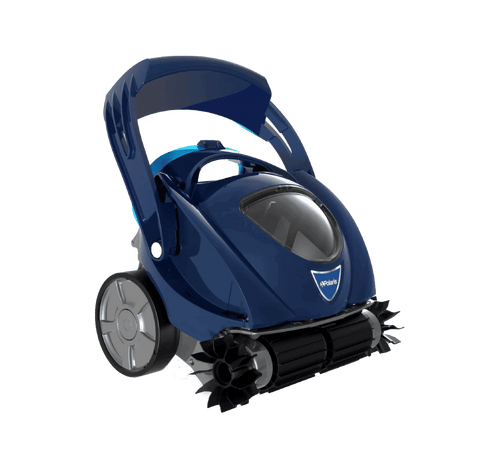Swimming pool owners always look forward to the spring as it typically marks the beginning of a brand new swimming season. With winter leaving for another year it’s a good time to check out how to open your pool the right way this spring. Opening and preparing a pool isn’t as difficult as it may sound and after following the necessary steps your family and friends will soon be enjoying the cool, refreshing water.
Clean the pool area
Before starting to work on the actual pool you should take the time to clean the immediate area such as the deck and patio to make sure there’s nothing in the way which may obstruct you. This will keep the area safe and there won’t be any debris present to fall in the pool. You may also want to prune any overhanging hedges and trees to keep the leaves out of the water.
Preparing pool supplies
You’re going to need certain pool supplies when opening the pool and this is a good time to make sure your stock of chemicals hasn’t expired over the winter. If any chemicals are out if date, they should be replaced with new containers. The chemicals also need to be checked to make sure they were sealed properly during the off season.
Removing the pool cover
No matter what type of pool cover you use, it will now need to be taken off and stored away for the summer. If the cover has accumulated water over the past few months is will need to be removed by a shop vacuum or pump. Try to keep the water from the top of the cover out of the pool when removing it. Once the cover is off, you should clean and dry it before folding and storing it for the season in a cool, dry place. You may also want to use a special cleaner and protectant on the cover at this time to extend its life.
Visually inspect the pool
Once the cover is off you can visually inspect the pool for any liner or wall damage such as cracks, tears, and holes. This should be done whether the pool is gunite, concrete, vinyl or a fiberglass pool. On some occasions, the top of the vinyl liner may have come off of the track. If this is the case, it should be repaired as soon as possible.
Prepare plugs and fittings
At this time you’ll be able to remove the winterizing freeze or expansion plugs from the wall returns and skimmers and replace the directional fittings and any underwater lighting if applicable. In addition, look over the pump and filter for any worn or damaged parts. The heater, pump and automatic pool cleaner can also be reconnected.
Clean the walls
The pool may have acquired calcium stains or scale over the winter and these can be removed with the right type of cleaner and a brush. The walls can be cleaned at the waterline and above and should be done so on a regular basis during the summer.
Re-fill pool
If the pool water is below the middle of the skimmer weirs you can re-fill it to this point. If the bottom of the pool is quite dirty you may want to vacuum it first though. The water will have to go directly to waste to make sure the dirt and debris doesn’t re-enter the pool through the filter system.
Inspect and run the filter
If you decide to vacuum to waste, be sure to check and see that the filter is in good working order and has enough sand if you use a sand filter. If the filter is in good shape you should not turn it on and operate it for 12 to 24 hours so the fresh water can mix in with the old.
Test the water
After the filter has been running for up to 24 hours you can test the water for total alkalinity, calcium hardness, chlorine, and pH levels. You will likely need to shock the pool with chlorine to remove bacteria and add algaecide and stabilizer to the water. The type and amount of specific chemicals you’ll need to add will depend on the results of your water test, but you should start by balancing the total alkalinity since it helps the other chemicals reach the desired levels. When balancing the water, the total alkalinity should be between 80 and 120 ppm, the pH Level should be between 7.4 and 7.6 while the free available chlorine needs to be between 2.0 and 4.0 ppm. The calcium hardness is ideal between 200 and 400 ppm and the Cyanuric Acid (stabilizer) should sit between 30 and 50 ppm.
Insert diving board, ladders etc.
Some pool owners may prefer to do this earlier, but once the water is properly balanced you can insert or install the diving board, stairs, and safety rails etc.
Safety equipment
Even the best swimmers may find themselves in need of help. It’s important to make sure the necessary rescue and safety equipment is easy to access and kept in good working order. All users should also be taught how to operate the equipment. Emergency phone numbers should also be placed by the pool.


